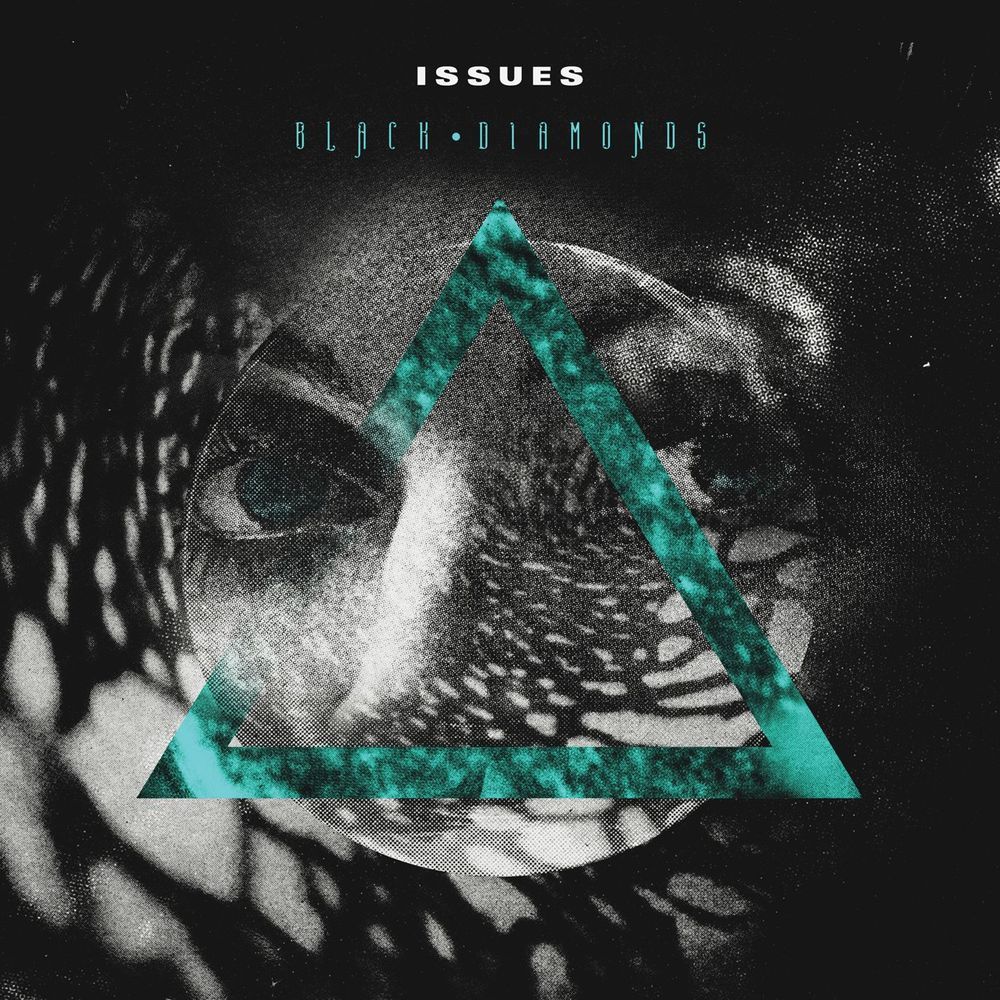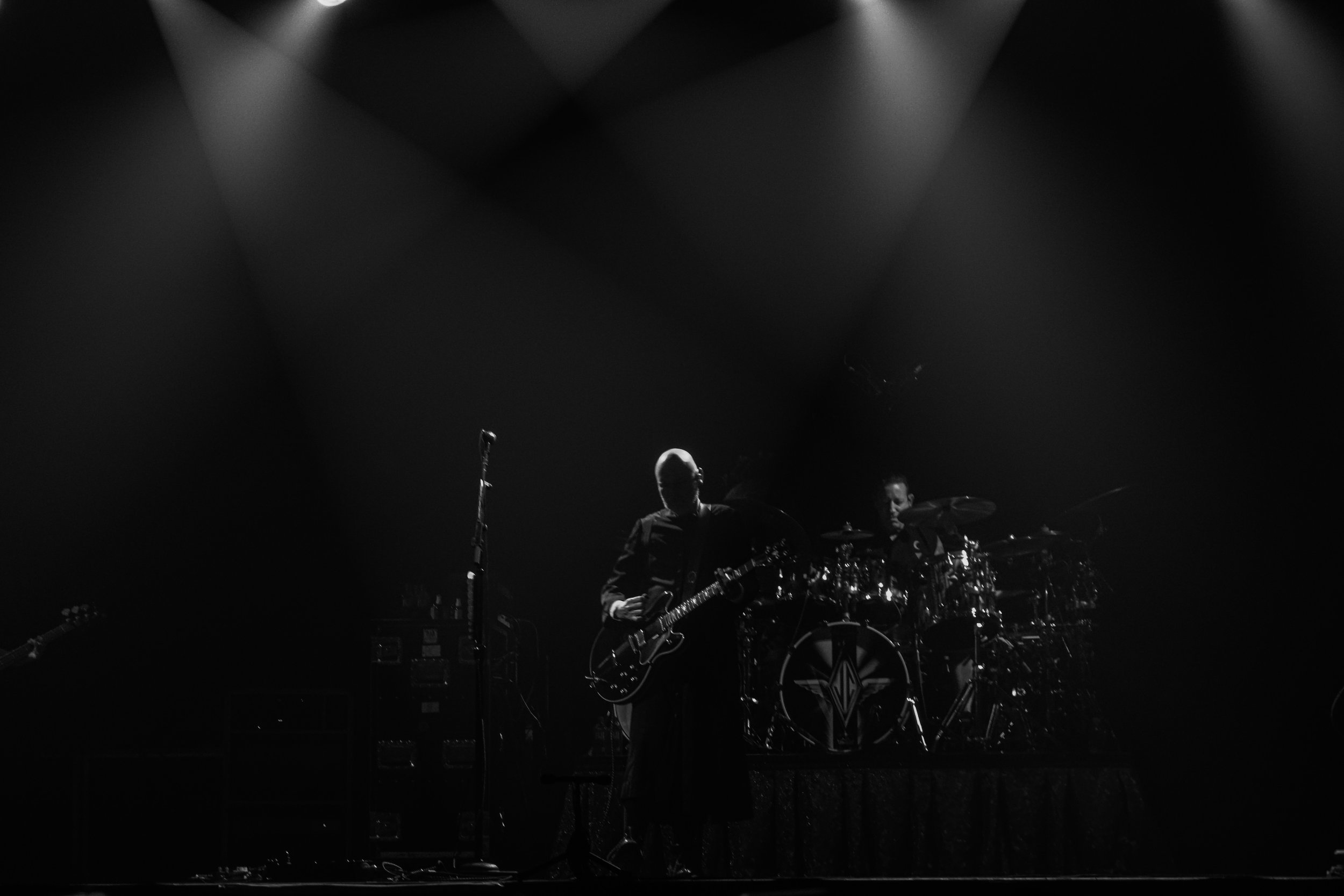In Defense of Illuminaudio: The Forgotten Chiodos Album
/When I say the name “Chiodos,” it likely evokes black floral pattern Myspace backgrounds, swoopy emo hair, and songs like “Baby, You Wouldn’t Last A Minute On The Creek.” If you had a scene phase between the years of 2005 and 2010, it’s likely that the band’s output during that time was nothing short of formative to your post-hardcore upbringing. If you were born after the year 2000, it’s likely the band exists more as an emo curiosity and oddball collaborator than anything foundational. Still, Chiodos quickly became a symbolic staple of the Warped Tour scene that now lives on in Emo Nites and throwback high school playlists the world over.
Despite this widespread influence, the band maintained a relatively modest discography of only four albums. Within this collection of records lies a wealth of middle school bangers, soaring falsettos, and enigmatic song titles. While most of the band’s well-known tracks can be found on their first two records, All’s Well That Ends Well and Bone Palace Ballet, the group’s best work also happens to be the one people discuss the least: 2010’s Illuminaudio.
Essentially an orphaned step-child of the band’s discography, Illuminaudio is the only Chiodos album to not feature Craig Owens on vocals, giving both fans and the band themselves a reason to write it off as a one-off collaboration that happened while the lineup sorted itself out. Owens’ replacement, Brandon Bolmer, not only did the band’s legacy justice but elevated the group into a new plane of post-hardcore creativity that existed slightly above the cartoonish gothic imagery of their previous output.
Even given Brandon Bolmer’s previous work as the lead singer of Yesterday’s Rising, he managed to hone his craft as a writer, performer, and vocalist. Indeed, Bolmer was able to rise to the occasion, meeting Chiodos on their level and quickly building off it. Quite frankly, it’s a shame that this release will probably never get the justice it deserves simply because it will always be viewed as “that album” without Owens.
Illuminaudio recently celebrated its tenth anniversary on October 5th, and I saw not a single peep of it online. There was no tweet from the band account, no retrospective articles, no reddit discussion posts, no nothing, which made me sad. I get why the band would disavow this record as the one odd-man-out of their discography, but that’s so unfair to the songs because there isn’t a miss in the bunch.
While the band eventually welcomed Owens back into the fold for 2014’s Devil (along with Thomas Erak of The Fall of Troy), Illuminaudio is an oft-overlooked chapter of the group’s history that has not only aged better than most records of this era, but stands alone as one of Chiodos’ best. It’s unfair to both Bolmer and fans that these songs are left to rot away in obscurity because they are deep, rich, and worth digging into, even if you aren’t a fan of the genre. Unlike the rest of the band’s discography, Illuminaudio is not a relic of the mid-2000s but a genuinely great collection of metal tracks that exist as a completely standalone entity.
The album kicks off with the scene-setting “Illuminaudio,” a spellbinding journey into the ethereal world of the record. On this track, we hear Brandon Bolmer easing fans into the group’s new era by doing his best Craig Owens impression, mirroring the previous singer’s style over a simplistic instrumental that adds a disarming layer of comfort and familiarity.
After this swirling two-minute intro, the track begins to disintegrate until a single whispered “stop” pauses the music. That interruption makes way for a solitary heartrate monitor-like note that flows seamlessly into “Caves,” the record’s bombastic lead single. Featuring a sing-along chant and slow-building drumbeat, the song hypes the listener up to a powerful and explosive scream about 30 seconds in that immediately sounds better than anything Owens ever belted. A chuggy guitar line bowls the listener over around the 1-minute mark, paving the way for the band to throw directly to the chorus, an effect that swept me off my feet on my first skeptical listen.
From there, the band adds an air of scene cred with the Vic Fuentes-assisted “Love Is A Cat From Hell,” essentially legitimizing this era of Chiodos as an official continuation of the band. Meanwhile, “Modern Wolf Hair” beat Kanye to the long-form wolves analogy by about a decade and culminates in a piercing, distorted scream that hits the listener like a punch to the face.
The biggest bummer of Chiodos rewriting the history of this record is that there’s no good reason for it. These songs are as structurally sound, creative, and heavy as anything they’d done before. It’s just that once the group lost their boy band appeal that Owens brought to the table, they found that their songs didn’t connect with their audience in the same way. It’s funny how far something as simple (and non-musical) as a band’s “look” can go in the era of 2010’s post-hardcore. It meant that something as over-the-top and cartoonish as “Baby, You Wouldn’t Last a Minute on the Creek” could succeed because it combined a unique musical style with something that was hyper-marketable. When your band can comfortably exist on an 11x17 poster from Rise Records, that was practically a guarantee you’d sell at least a few thousand records without even trying… but that’s beside the point.
The instrumentals on Illuminaudio are all as proficient as ever, but Bolmer’s range of both singing and screaming offered something that Owens never had. On top of this, the studio effects they used on Bolmer’s screams made them land better than anything else in the scene at the time. I’d never heard such visceral and propulsive unclean vocals outside of Austin Carlile, but they work on this record because they’re used so sparingly and with such restraint. The screams come either at the climax of each song or are seeded throughout to make individual moments more impactful. It’s really an artistic approach to a genre that was very prone to overusing elements like that at the time.
Not only that, the band is able to create this sense of cresting emotional impact without even using screams on some songs. Just look at “Notes In Constellations” which begins as a music box-like lullaby which slowly works its way up to a ferocious and biting instrumental attack that resolves with the payoff of a feature-length film.
Songs like “Scaremonger,” “Hey Zeus! The Dungeon,” and “Those Who Slay Together, Stay Together” tread the familiar gothic horror ground as the band’s first two albums, but still do it in a way that feels more artistically elevated and complete than, say, “Is It Progression If a Cannibal Uses a Fork?”
In an album filled with fantastic performances, Bolmer’s best moment comes in “Stratovolcano Mouth” where he works a hypnotic repetition of “Let it all out / Let, let it all out / Let, let it all out / Let, let it go” into a (literal) explosion as he works up to a seconds-long scream of “EXPLODE!!” which sounds downright world-conquering. This passionate delivery is guided by a driving guitar line and a gorgeous string section with a piano thrown in for good measure. It’s textbook Chiodos, and the fact that this song has barely over a half-million plays on Spotify is a flat-out shame.
Illumiaudio also found the band crafting unique moments that make each song feel different from the ones surrounding it. There’s a heavy-as-shit breakdown at the end of “Let Us Burn One” that’s absolutely skull-crushing. There’s a crazy auto-tuned transition at the end of “Scaremonger,” a group chant/drum roll pairing on “Modern Wolf Hair,” and that aforementioned music box-like technique used on “Notes In Constellations.” This is all capped off with “Closed Eyes Still Look Forward,” a gorgeous piano ballad that ties the entire story of the album up, references previous songs, and loops back to the beginning, all within three minutes. These songs simultaneously stand on their own in isolation and work together to fit into the stark black and gold-hued world of the album. The end result is a collection of 12 songs that all form together into one piece that’s larger than the sum of its parts.
I know there are a ton of nostalgic Chiodos fans out there who will read this and won’t be able to separate the love for their own mid-2000’s emo phase from the music itself. I’ll admit there’s a TON of nostalgia baked into Illumiaudio for me, but what makes me passionate about this record is how unfairly the band treated it. There are songs here just as worthy of scene worship as anything on the band’s first two records, and I’d argue even more so in some cases. Seeing other bands of this time period like August Burns Red release tenth-anniversary reissues of their early work or bands like The Devil Wears Prada go on tour performing their decade-old albums in full makes me wish Illuminaudio was treated better.
Regardless, Illumiaudio stands on its own as an album and an artistic statement. It’s punctual, explorative, and walks that fine line between welcoming old fans while still carving out new sonic territories. The instrumentals are finely-crafted, punchy, and creative. Most importantly, Bolmer’s vocals are some of the best ever recorded, and the duality between his piercing high notes and his guttural screams is absolutely otherworldly.
The way the group meshed all of these instrumental elements together into a wall of sound that’s heavy-hitting yet swirling and ornamental is Chiodos to me. They understood what this band stood for and pushed that creative ethos as far in one direction as they possibly could. The end result was a perfect storm of a new singer and a band at the peak of their artistic ability crafting one of the best, most unfairly-forgotten post-hardcore records of the 2010s. Let us burn one for Illumiaudio.


















